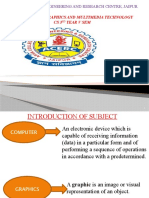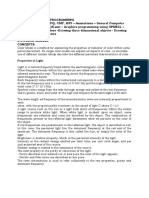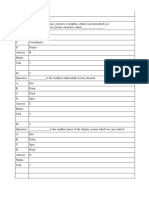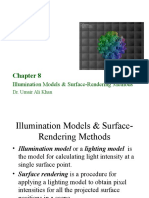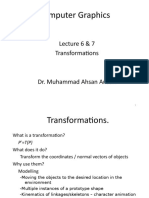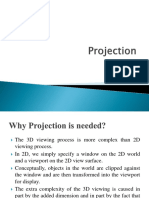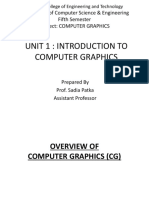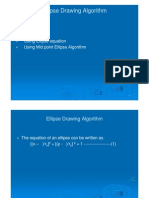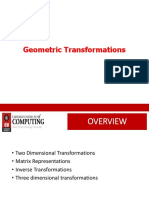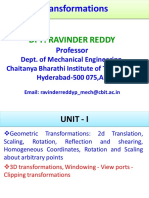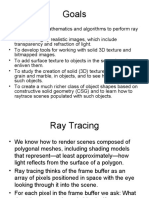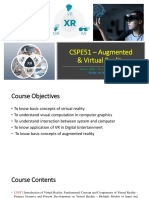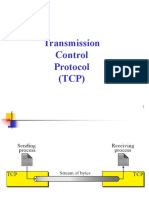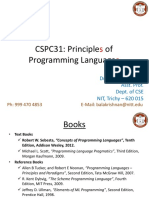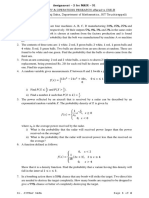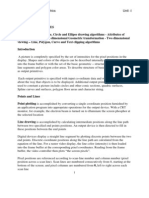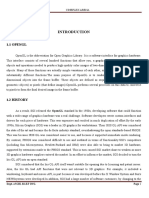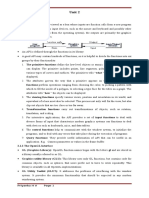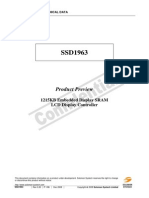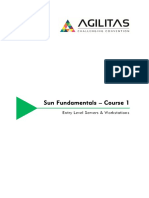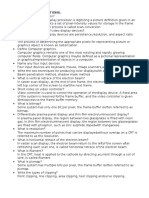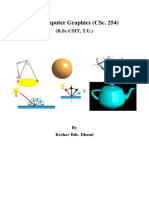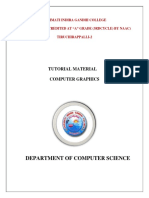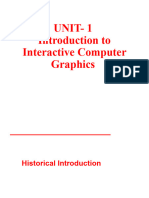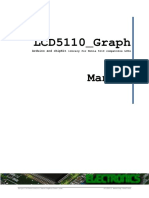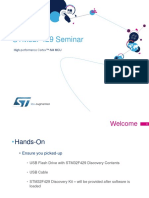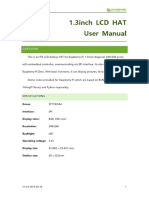0% found this document useful (0 votes)
184 views74 pagesVR Visual Computation Basics
This document discusses fundamentals of computer graphics including:
1. It describes the components of computer graphics including modeling, storing, manipulating, viewing and rendering.
2. It discusses raster and random displays and how they work based on television technology using scan lines and pixels.
3. It covers basic modeling primitives like points, lines, and regions as well as 2D transformations like translation, rotation, and scaling using homogeneous coordinates and matrix representations.
Uploaded by
A1FA MSKCopyright
© © All Rights Reserved
We take content rights seriously. If you suspect this is your content, claim it here.
Available Formats
Download as PDF, TXT or read online on Scribd
0% found this document useful (0 votes)
184 views74 pagesVR Visual Computation Basics
This document discusses fundamentals of computer graphics including:
1. It describes the components of computer graphics including modeling, storing, manipulating, viewing and rendering.
2. It discusses raster and random displays and how they work based on television technology using scan lines and pixels.
3. It covers basic modeling primitives like points, lines, and regions as well as 2D transformations like translation, rotation, and scaling using homogeneous coordinates and matrix representations.
Uploaded by
A1FA MSKCopyright
© © All Rights Reserved
We take content rights seriously. If you suspect this is your content, claim it here.
Available Formats
Download as PDF, TXT or read online on Scribd
/ 74





